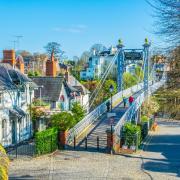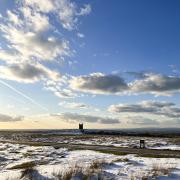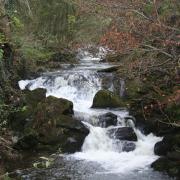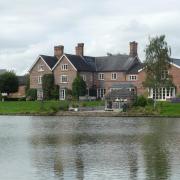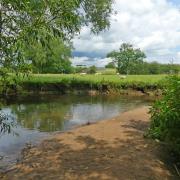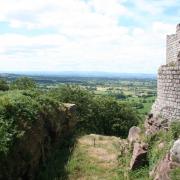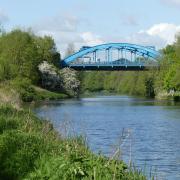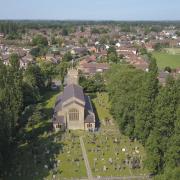Fancy a 135-mile ramble through areas of striking natural beauty? Then you’ll be wanting to tackle the Isle of Anglesey Coastal Path, writes Howard Bradbury.

There is a badge and a certificate awarded to those who walk the 135 miles around the coast of Anglesey. And since the Friends of the Isle of Anglesey Coastal Path started awarding those badges of honour in late 2011, 300 walkers have claimed to have done the full circuit. The truth is that most of us will not have the time - 12 days - or the energy to tackle the coastal path in one go. But we can tick off a little section every time we visit the island. Research suggests that many people are indeed doing the coastal path in instalments, and that just over half of those walkers are local to the area. Why should you want to walk the Anglesey Coastal Path? ‘The major draw of the coastal path is undeniably the landscape which it passes through, of which 95% has been designated as an Area of Outstanding Natural Beauty,’ says Sioned Lynn Jones, coastal access project officer with the Isle of Anglsey County Council. ‘The four “corners” of the island are very different in character and the varied coastal scenery means that within a 200km circular route you can see wide tidal estuaries, tiny coves, extensive dune systems, little fishing villages and rugged dramatic cliff-top sections. ‘There is lots of evidence of old settlements, burial chambers and industrial heritage dotted all over the place, and geology is also very important on the island. It now has Geopark status, which recognises its importance on an international level.’ The coastal path has evolved over many years, but from 2007 onwards was developed and funded as part of the Wales Coast Path project. The path takes you through farmland, coastal heath, sand dunes, salt marshes, foreshore, cliff and even some woodland, with the route marked by a blue circular logo featuring a white tern. The official starting point of the path is St Cybi’s Church, Holyhead, and, if you follow the route to the letter, your first day’s walking will take you off Holy Island and up the west coast to Porth Trwyn (not too far from one of Cheshire Life’s favourite restaurants, the Lobster Pot at Church Bay). Day two takes you from Church Bay to Cemaes, day three Cemaes to Amlwch via the rugged cliffs of Bull Bay (look out for dolphins and seals here) and day four Amlwch to the pretty fishing village of Moelfre. Day five takes you to Pentraeth and thence, on day six, to Beaumaris (Ye Olde Bull’s Head Inn there is highly recommended).

Day seven takes you to through Menai Bridge (Dylan’s restaurant here is a must) and on, via the marvel of Telford’s suspension bridge, to Llanfairpwll. Day eight and nine take you along the south coast, through Newborough Forest (an excellent food stop would be The Marram Grass Cafe at Pen Lon) on to Llanddwyn Island. Aberffraw and Rhosneigr are ticked off on day ten before crossing back onto Holy Island and going via Rhoscolyn, Trearddur and the cliffs of South Stack and North Stack back to the starting point in Holyhead. Go to www.visitanglesey.co.uk for downloadable maps of the coastal path and full directions for each section,

Pier precious Beaumaris boasts an impressive 13th century castle, a pretty pier but also a grimmer tourist attraction in the shape of a jail where you can visit spartan cells, including one where condemned prisoners spent their last hours.

Room with a view On a rocky promontory above the cosy cove of Llaneilian stands the lighthouse at Point Lynas. The first lighthouse here was erected in 1779, and the current lighthouse dates to 1835. On a clear day it is possible to see from here to the coast of Ireland, the Isle of Man, Dumfries and Galloway and the Lake District.

Window on history Passing Porth Wen on the north coast of Anglesey, you will see this natural sea arch. But Porth Wen’s other attraction is the incongruous sight of an abandoned brickworks, right on the coast. The site made silica bricks using the quartzite rock which was close at hand, but ceased production a century ago, now providing a slightly eerie reminder of Anglesey’s industrial past.

Llanddwyn ahoy The coastal path takes you to the tip of Llanddwyn island, where a white beacon house once guided shipping into Menai Strait, and now serves as frequent inspiration for photographers. Strictly, Llanddwyn is not an island but a peninsula, though high tides can briefly cover the patch of beach by which you approach this lovely spot.

A port in a storm The church of Llanbadrig, on the headland near Cemaes Bay, was founded in the 5th century. It is dedicated to St Patrick, who passed this way as Bishop Patrick en route to bring Christianity to Ireland. He did not intend to stop off in Anglesey, but was blown there by a vicious storm in 440AD, founding the church in gratitude for having reached dry land.

To the lighthouse The lighthouse at South Stack, the western tip of Anglesey, sits on a craggy lump of rock, separated from sheer granite cliffs by turbulent seas. If you want to include the lighthouse in your circumnavigation of Anglesey, you will need to tackle 400 steps down those cliffs (and 400 steps back up again!). The area is rich in birdlife - guillemots, razorbills and puffins - which you can see from the RSPB visitor centre just down the road from the cliff top.






